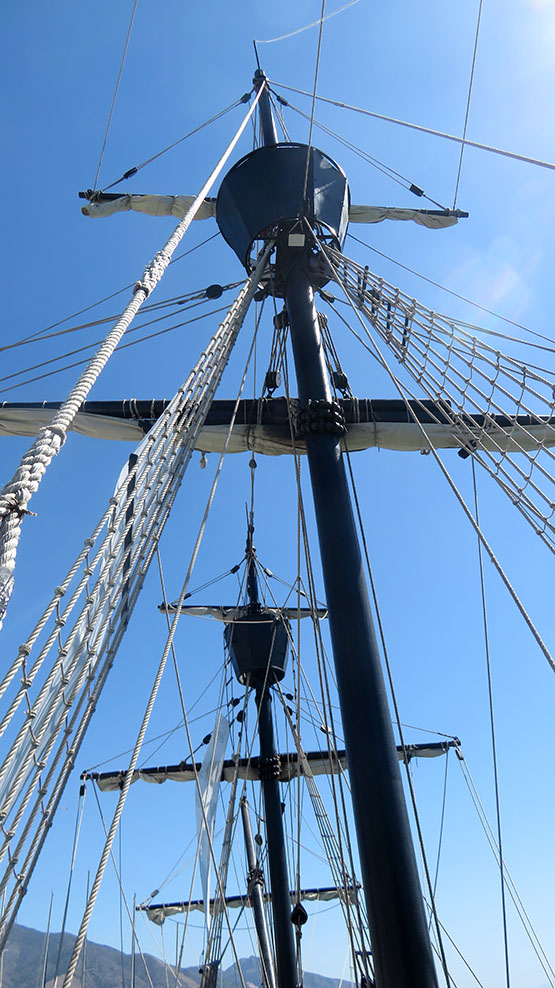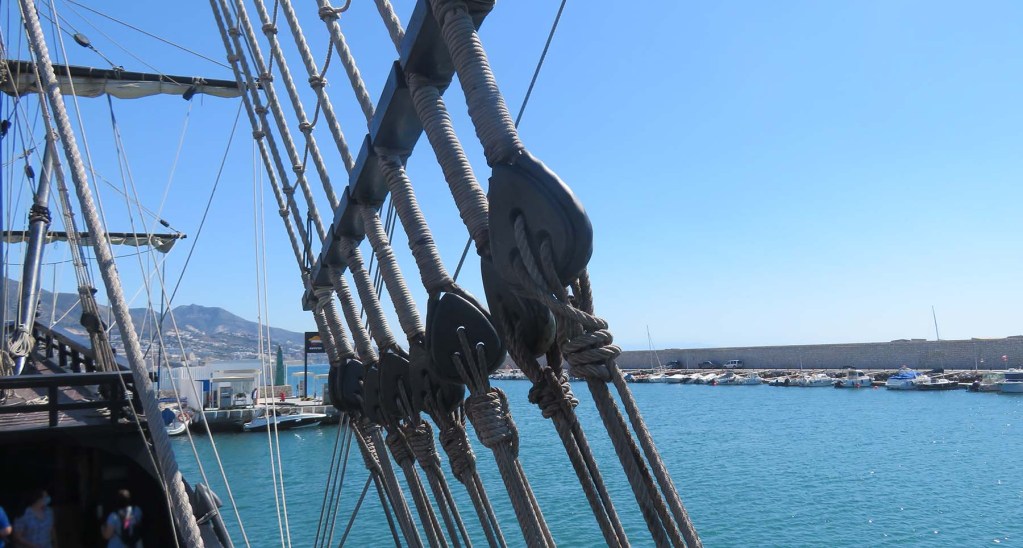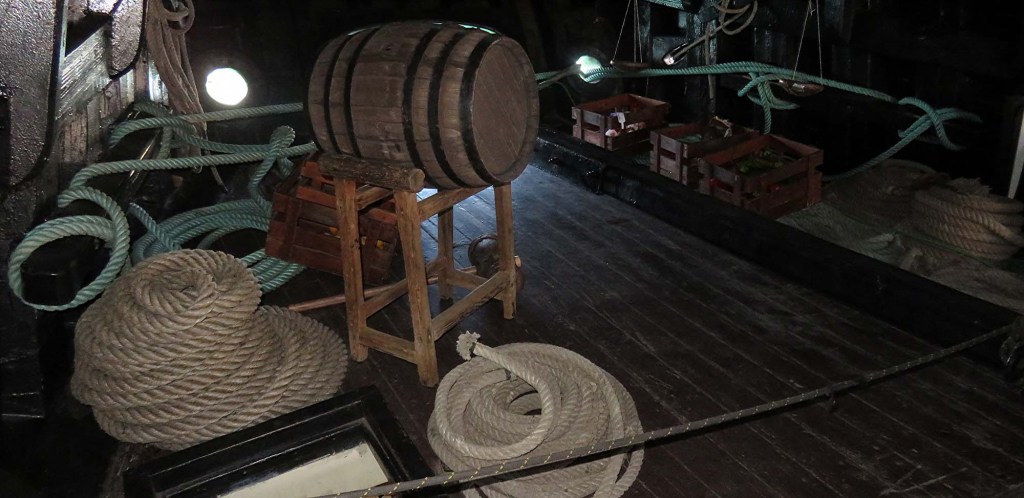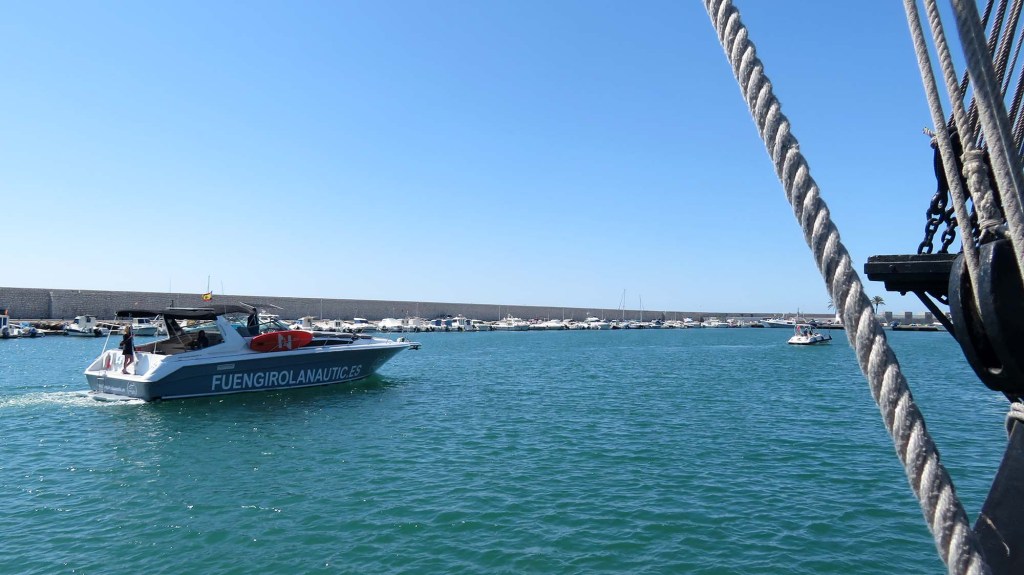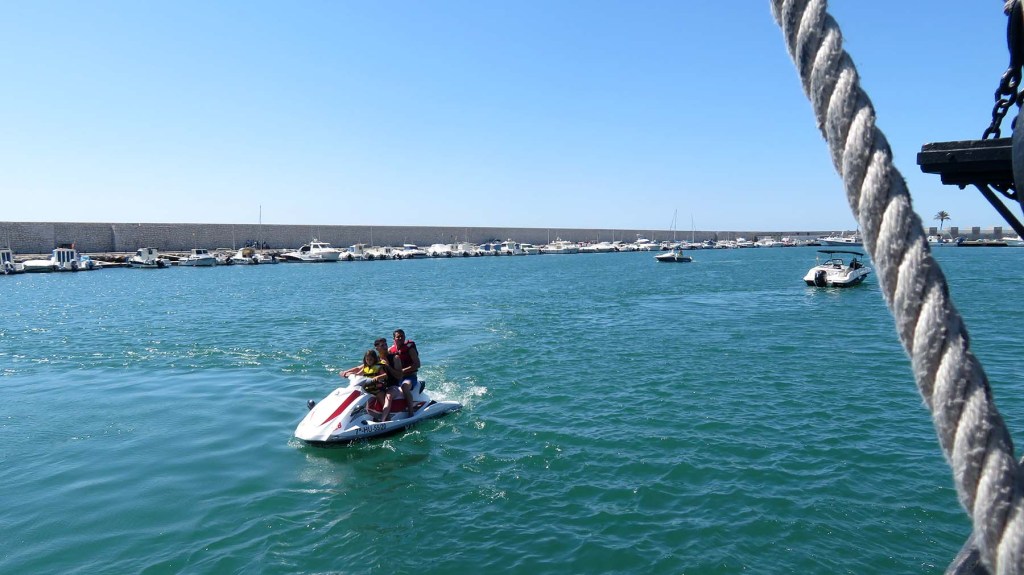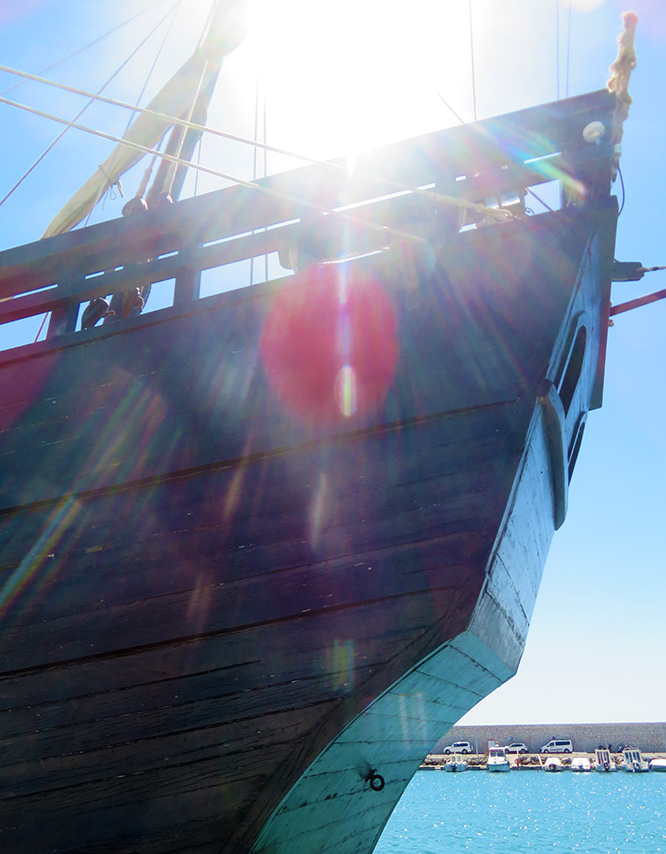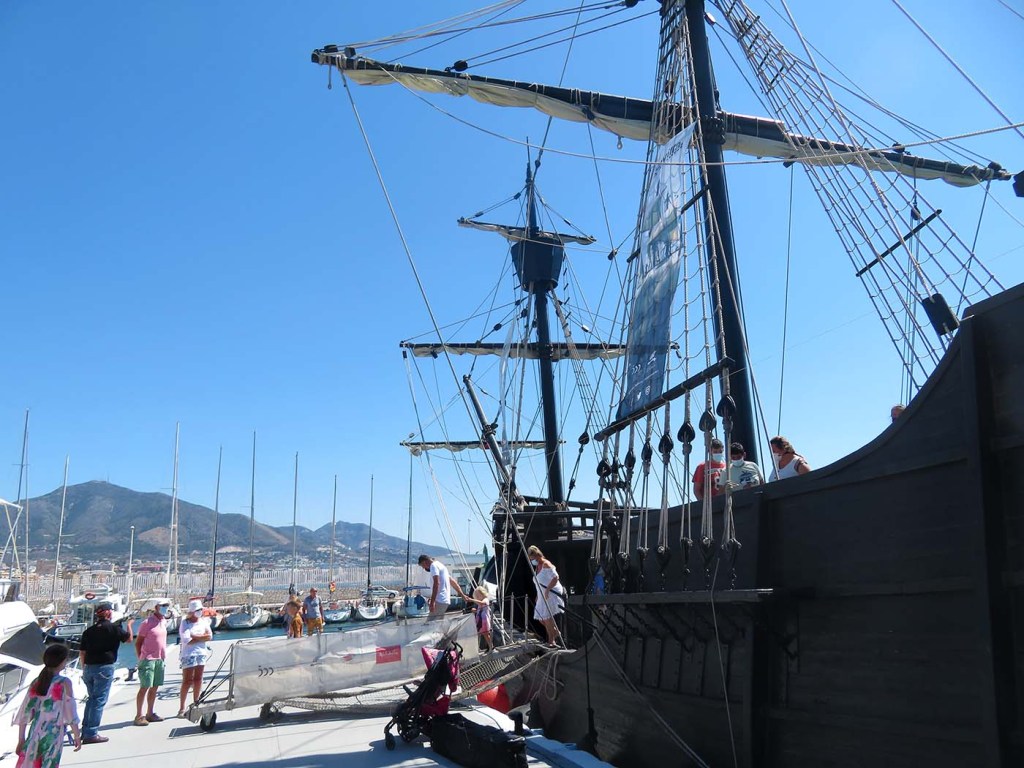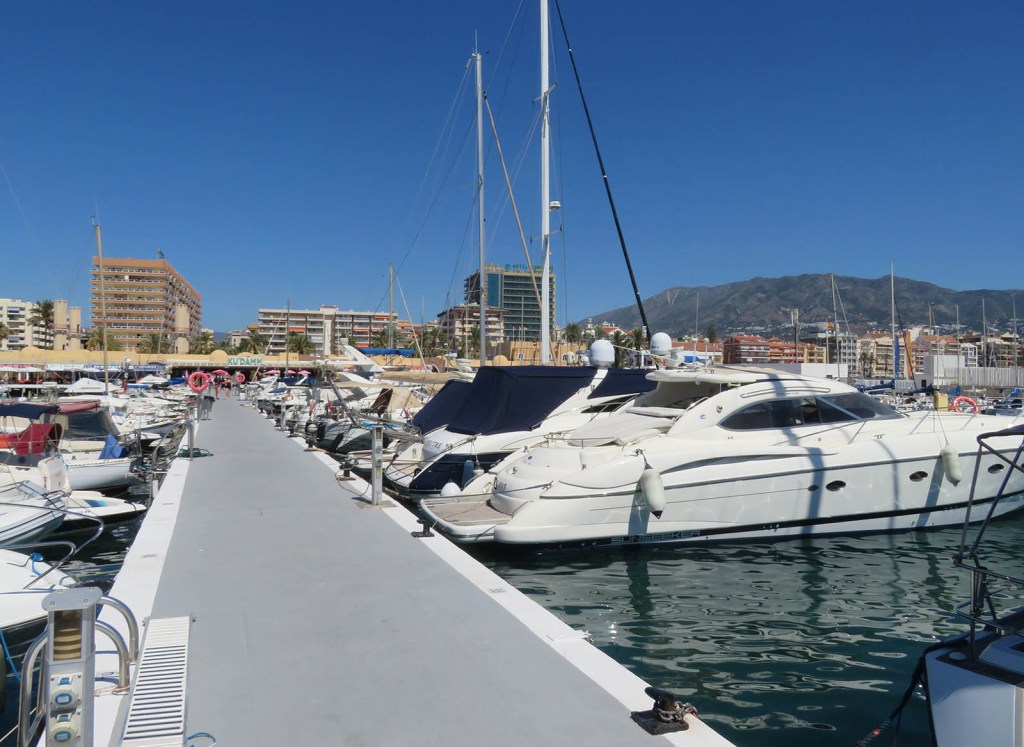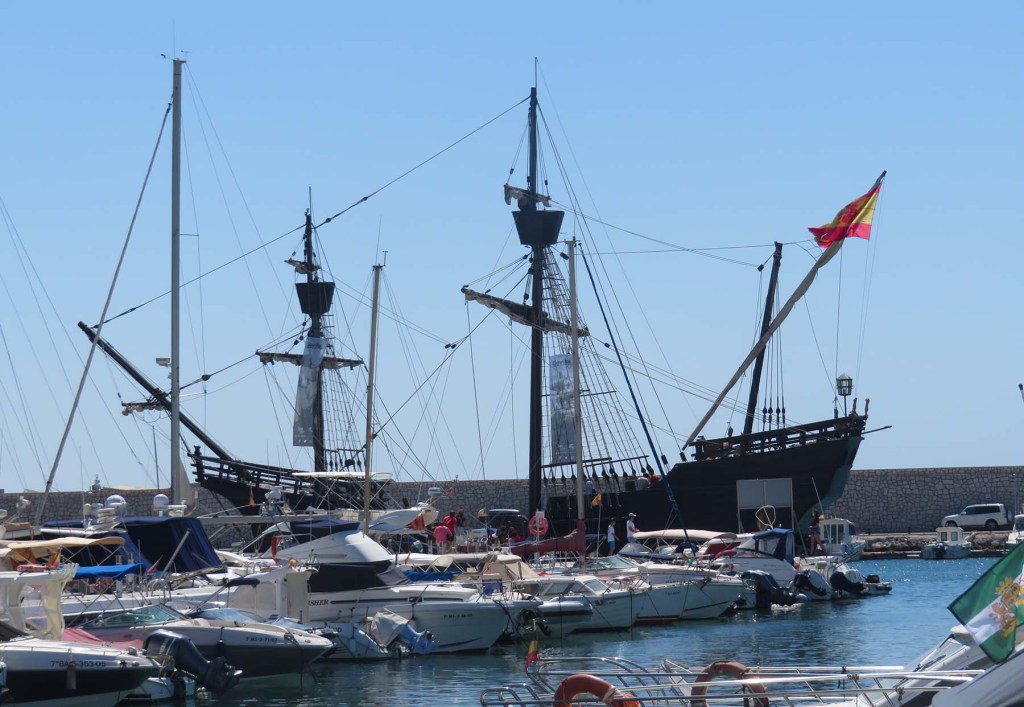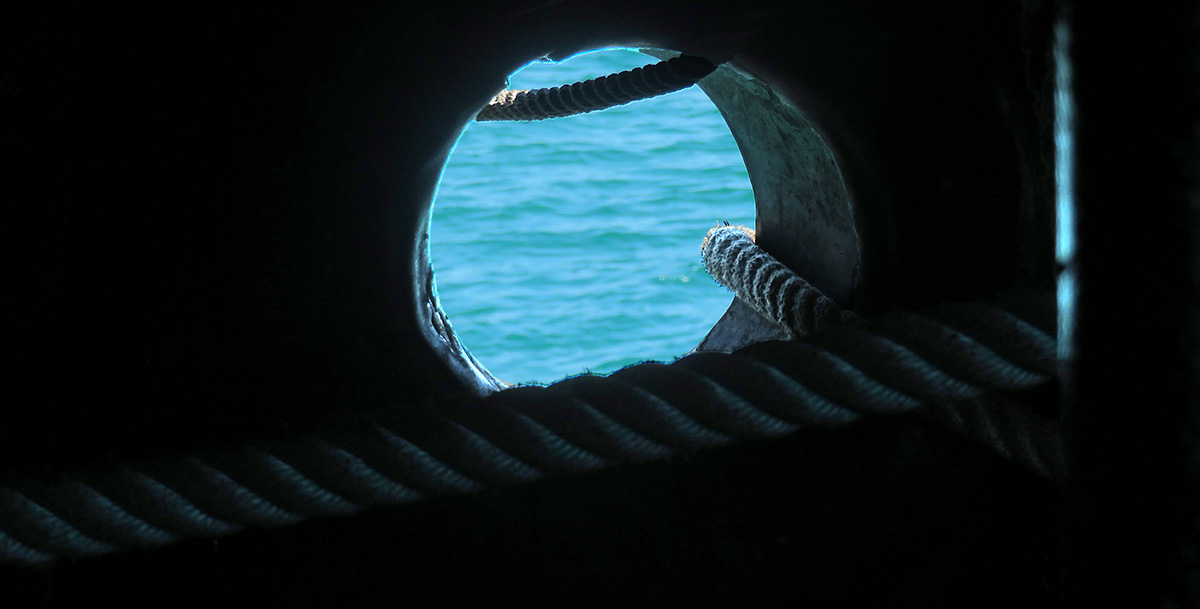La versión en español está después de la versión en inglés.
I CAUGHT THE MOON EARLYISH last night and the color was magical. I wish I could share with you what the reflections on the sea looked like, but my photos don’t do it justice.
Today, I returned to the Port of Fuengirola, paid my money, and went onboard the Nao Victoria. A nao (also known as a carrack, which are both apparently other words for “ship”) was developed “as a fusion between Mediterranean- and Northern European-style ships.” The style first appeared in the late 13th century and was developed by the Spanish and Portuguese to trade in the Mediterranean Sea and North Atlantic; it evolved over the years.
The original ship left Sevilla in 1519 and returned there in 1522. The replica sailed from Sevilla in 2004 and returned in 2006. I was in error yesterday when I said Magellan began the voyage as captain. The ship was actually one of five ships called the Fleet of Spices that set sail from Sevilla. Magellan was fleet commander. The goal was to open a new westbound route that reached to the Spice Islands (Moluca Islands, in what is now Indonesia). Magellan died in the Phillipines a few months before reaching their goal and Juan Sebastián Elcano took over as fleet commander with the Nao Victoria, the only surviving ship.
The current crew is made up of volunteers, who are exceptional. There’s even an hour-long audio tour you can connect to with your smart phone once you’re on the ship. The crew only permitted a certain number of people (perhaps 12) onboard at one time, but it was still too crowded for my comfort, so I didn’t stay long. I didn’t even go below decks this time, where there’s room for six in my estimation but slept 45 at the start of the original journey. And with no flush toilets!
.
ANOCHE ATRAPÉ TEMPRANO LA LUNA y el color era mágico. Ojalá pudiera compartir con vosotros cómo eran los reflejos en el mar, pero mis fotos no le hacen justicia.
Hoy volví al Puerto de Fuengirola, pagué mi dinero y subí a bordo de la Nao Victoria. Un nao (también conocido como carrack, que aparentemente son otras palabras para “barco”) se desarrolló “como una fusión entre los barcos de estilo mediterráneo y del norte de Europa”. El estilo apareció por primera vez a finales del siglo XIII y fue desarrollado por los españoles y portugueses para comerciar en el Mar Mediterráneo y el Atlántico Norte; evolucionó a lo largo de los años.
El barco original salió de Sevilla en 1519 y regresó allí en 1522. La réplica salió de Sevilla en 2004 y regresó en 2006. Me equivoqué ayer cuando dije que Magellan comenzó el viaje como capitán. El barco era en realidad uno de los cinco barcos llamados Fleet of Spices que zarparon de Sevilla. Magallanes era el comandante de la flota. El objetivo era abrir una nueva ruta hacia el oeste que llegara a las Islas de las Especias (Islas Moluca, en lo que hoy es Indonesia). Magellan murió en las Filipinas unos meses antes de alcanzar su objetivo y Juan Sebastián Elcano asumió el mando de la flota con el Nao Victoria, el único barco superviviente.
La tripulación está formada por voluntarios, que son excepcionales. Incluso hay un recorrido de audio de una hora al que puede conectarse con su teléfono inteligente una vez que esté en el barco. La tripulación solo permitió un cierto número de personas (quizás 12) a bordo a la vez, pero todavía estaba demasiado lleno para mi comodidad, así que no me quedé mucho tiempo. Esta vez ni siquiera bajé por debajo de la cubierta, donde hay espacio para seis en mi estimación, pero durmió 45 al comienzo del viaje original. ¡Y sin inodoros!


